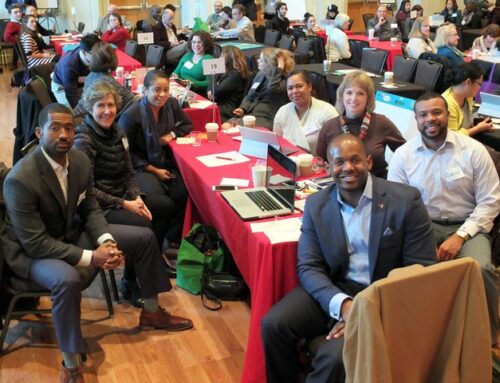If I read one more PMO article or book that tells me to focus my energy on process first if I want my PMO to be successful, I’m going to be sick. Process is NOT the answer (well, at least it’s not the first answer)! I’ve seen many PMO leaders spend a year or more putting in place tons of process, plenty of templates, several tools, and a hire a bunch of methodology zealots to come execute it all. You know what happens to those PMOs? They are extinct within two years.
Why? No one cares about process but you. Of course, you should care. That’s not the issue. It’s how much you care and prioritize it in advance of other business priorities that will hurt you. Show me the CEO who says he prefers that you follow every step in a process over getting high impact results. Good luck finding them. If you do, they aren’t likely to be around long.
Why? Because all of the process in the world won’t make your PMO successful. In fact, too much process, especially too early, will almost guarantee failure.
It’s not about the process, people! It’s is about how you Get. It. Done. It’s about outcomes and impact, not tools and templates.
OK, before all of you awesome process people have a heart attack, let me explain.
It takes time to roll out process, just right process, that will be effective in an organization. I’m not suggesting you don’t do it at all, just do it incrementally and thoughtfully while learning your business and helping your business solve problems. Give yourself time to conduct an assessment of the business needs, the culture, the organization, the norms, the current processes and practices. Once you know what you are dealing with, you can recommend a solution that best meets the needs of that organization. You can right-size your process…to achieve greatest impact.
What’s the best way to assess an organization? By helping them solve immediate business challenges they are having today. “What?” you say, “but I don’t have all of my templates in place, yet!” Who cares? Your business isn’t going to say, “Come back when you have a full set of documents you are going to force me to complete before I can get work done.” No, that’s not a thing business leaders generally say. They are more likely to say (and your job is to position them to do so), “Great! Let’s get moving on solving this problem!” I don’t care if you build your project schedule on a napkin, a flip chart or in a tool, it’s about getting that schedule built, understanding your stakeholders and their requirements, and mobilizing people to drive strategy realization.
By doing this, you earn their respect and trust while getting some wins under your belt. Success breeds more success. It’s the rich get richer philosophy. Once you have success, you are more likely to be the one they come to when they really need help. The trust grows. Your success grows. Everyone wins.
Trust me on this one, I know. The times I’ve spent too much time building out process and not enough time focused on my business, their needs, and solving their problems, it’s put my PMO on the brink of extinction. I had great advisors and mentors (all business people) that helped me figure out what I was doing wrong. It’s not that my heart wasn’t in the right place, they’d say. They understood what I was trying to do and even the purpose and value of it. However, I hadn’t built trust with those business folks yet, so they were just seeing me throw a bunch of roadblocks in their way instead of solving their problems. That was NOT at all my intent. I knew the value of a good template and process to help standardize and get to repeatable successful outcomes. That’s all fine, they’d say, but I hadn’t proven I knew what I was doing first. I hadn’t proven that I could help them have impact. I hadn’t proven they could trust me, yet. I was telling them instead of showing them. I was doing it to them instead of doing it with them.
Use the Jedi Mind Trick. One of my favorite Program Managers used to do this to stakeholders all of the time and they loved him for it! He’d gently guide them through a simple process to get unstuck and get their business objectives accomplished to keep the project moving forward. Then, once they were all excited and patting themselves on the back, he’d let them know that he was using the Jedi Mind Trick on them and that it was really a pretty standard project management process he had just guided them through. Next time, they could just follow that same process to get to the same results. He didn’t shove terminology or templates or process at them. He just stood by them and walked them through a simple framework, using business terms and focusing on outcomes.
I’m going to assume that the vast majority of the people reading this post can do basic project management in their sleep. If that’s the case, then you can easily use your common sense and common practice to subtly bring your stakeholders through a very simple framework without shoving it in their face.
I run two companies right now and in both, my staff knows that I am about accountability and results. One of the companies, Project Management for Change, is run by a large team of almost all project management volunteers. Now, that’s a process oriented group! I am continually reminding them that we have outcomes we need to show and results we need to get on timelines that aren’t going to move. The minute we get too focused on process without getting to outcomes, I pull them back and refocus them on getting to results to build credibility with our stakeholders (volunteers, sponsors, PM organizations, nonprofits, etc.) First, let’s show results (a.k.a. PMDoS 2015), then let’s document what we did to share with others (a.k.a. PMDoS 2016 and our PMDoS Playbook), now we can run everything from a repeatable and replicable process that we KNOW works (a.k.a. expansion of PMDoS globally in 2016-17). We proved it by having wild successes thus far. It’s a real thing. It’s now worthy of standardization. We had impact.
In my other company, PMO Strategies, my slogan is Get. It. Done. I take that very seriously. That does not mean we are fire fighters. We are certainly fire preventers. But we earn trust by solving problems and delivering results and then say, “Let’s work together to make sure we prevent this from happening next time.” We apply this internally, as well. We are doing an incredible amount of value generating work for our clients and want to be as process efficient and repeatable as possible, but we are learning not to boil the ocean when it comes to process. Let’s figure out what works in our environment (and that of our clients) and then we can standardize it.
Did you read that? Figure out what works FIRST, then you KNOW what you are standardizing is going to work in that particular environment. Make sense? You still get to standardize, just after you’ve built trust and delivered results with your stakeholders. Now they trust you. Now they will listen.
Once they trust you, once you have helped them, once you have had a positive impact on their organization or business, then is the time to talk about adding process. That’s the perfect time to strike. Their guard is down and they are primed for you. You say, “I’m glad to have helped. I have some ideas on how we can do even better, next time.” Bam! Now they are listening.
The end.
Thanks for taking the time to read this article.
Click here to receive these blog posts right to your inbox.
Fill out our one-minute survey if you have topics you would like read more about.
I welcome your feedback and insights. Please leave a comment below.
See you online!
Warmly,









[…] Overall co-ordinationCompany wide standardizationImprove communicationMonitoringManagement ReportingPMO Objectives Time Tracking. The problem with process: Why your projects and PMOs are failing before they ever get off the ground…. […]
[…] Laura Barnard explains why PMO success is driven more by building trust than by establishing repeatable processes. […]
[…] For more on this topic, check out The Problem with Process. […]
[…] conflicts with getting results. I talked about process getting in the way of progress in this post that I encourage you to read. I dive deeply into the specifics of that problem we create for […]
[…] Focusing your energy on process first isn’t working. I get it, most articles and books tell you to focus your energy on the process first, but now you know it’s NOT the answer. Here’s a secret…you are the only one that cares about process and you have to prioritize results above the process. Get the details in The problem with process: Why your projects and PMOs are failing before they ever get off the ground… […]
[…] conflicts with getting results. I talked about process getting in the way of progress in this post that I encourage you to read. I dive deeply into the specifics of that problem we create for […]